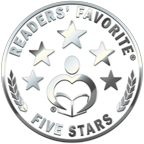Happy February! This month, to celebrate the release of my book Gallery of Myth under the penname TA Page, all our Fun Fact Fridays will be about constellations. Last week was Orion; this week is Cassiopeia and her friends.
Like Orion’s belt, Cassiopeia is easy to spot, even in areas with lots of light pollution. To most people in the Northern Hemisphere, she looks like a sprawled-out W (and the sprawling is appropriate, since she’s usually depicted as “the queen on the throne”). She’s nearby both the Big Dipper and the North Star, often directly overhead during stargazing.
Now, I promised this would be about Cassiopeia and her friends, but friends is not entirely accurate. In mythology, Cassiopeia is the one who boasted about the beauty of her daughter, Andromeda, made the gods angry, and ended up chaining said daughter to a rock to be devoured by a sea monster. Fortunately, Andromeda is rescued by Perseus, who is the most famous character of the group. As a mythological character, Cassiopeia is pretty low on the list of role models and literary BFFs. She’s more akin to the evil queens of fairy tales. However, as a constellation, I think she’s really cool, because arrayed around her are all the other characters of the story: Cepheus (the King who doesn’t do anything to check his Queen’s boasting), Andromeda (the Princess in peril), Perseus (the hero), and even Cetus (the sea monster).
Now, on a stargazing note, you might not be surprised to hear that all those other constellations are harder to spot than Cassiopeia. (After all, even though the story is usually called something like “Perseus and Medusa” or maybe “Perseus and Andromeda,” the entire plotline of “kingdom punished with sea monster/princess in peril/hero saves princess” only exists because of Cassiopeia’s boasting.) Cepheus, the King, mostly looks like a big pentagram near the Dippers; Cetus is a random trail of stars; Perseus is a complicated and relatively faint stick figure along the Milky Way, and Andromeda is really just one leg of the larger constellation Pegasus (who is also related to the story, since the winged horse was born from Medusa’s blood). If you have a nice night and a constellation map, you can find them all. But most of the time, you have to be content with finding Cassiopeia and knowing that everyone else is sure to be nearby. 🙂
Stay tuned for more about other constellations on future Fridays!
Selected Sources
All info this week came from my own experience and from Antonin Rukl’s Constellation Guidebook, published 1996.





